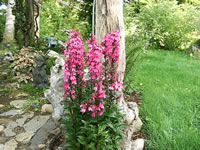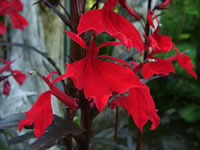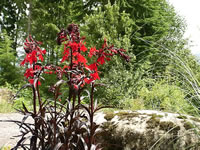How to Grow and Care for Cardinal FlowersLobelia cardinalisThe intensely brightly colored flower spikes of the Cardinal Flower serve as a beacon to the hummingbirds and butterflies who dine on the flower's nectar. The plant itself also acts as a host for some species of butterfly larvae. |
||||||
|
||||||
A Forum discussion about Cardinal Flower Plants |
||||||
Search The Garden Helper:



